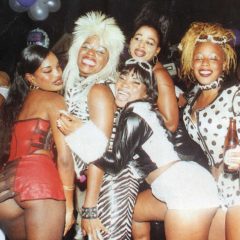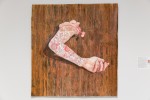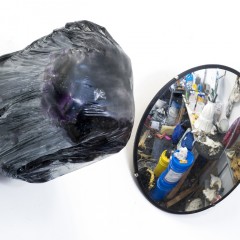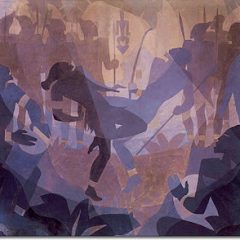I like it when art takes me to places that I have never been to before. Being based in Brooklyn, I left my regular art haunts to visit Firelei Báez’s solo show, “Joy Out of Fire,” at the Schomburg Center for Research in Black Culture in Harlem, a New York Public Library research library and archive for people of African descent. While the Studio Museum is under construction through 2021 at its new location on West 125th Street, various sites throughout Harlem are hosting exhibitions for the museum. For several months Firelei Báez studied at the library and explored its extensive archive of photographs, letters, and other documents. It is a treat to see Báez’s work in a context that celebrates the cultural contributions of notable people of color, and she adds the element of Feminism to this cultural dialogue by focusing her work specifically on women of color.
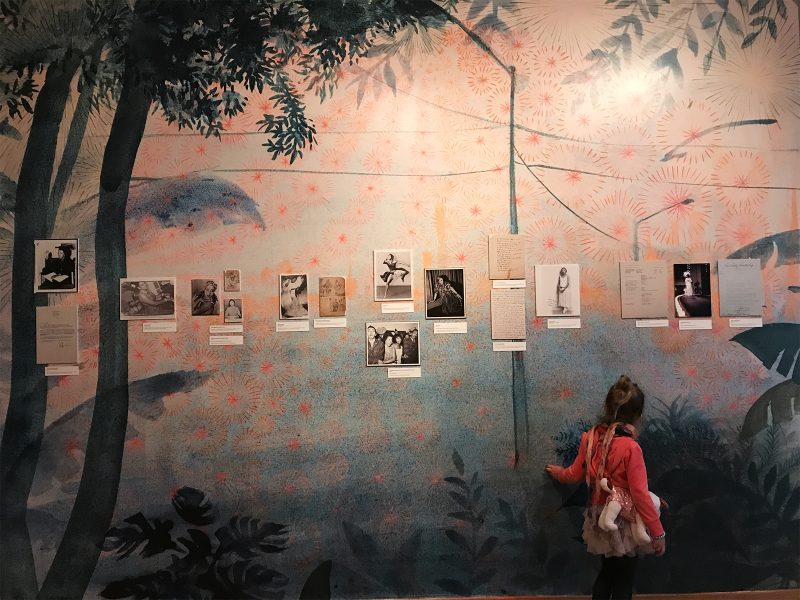
Painting the archive
Her beautiful, large-scale, floor to ceiling paintings, primarily made of acrylic on canvas drape the rotunda-shaped Latimer/Edison Gallery at the heart of the Schomburg Center. The first artwork that greets the viewer in this circular room is a large diptych, “Untitled” (2018), made of fluid acrylics on Taklon that reads like a colorful Rorschach inkblot with collaged abstract flourishes. It’s an inviting way to open the viewer’s mind to what follows: a show brimming with historical reference and reverence combined with a personal artistic journey and search. The inner circle of the rotunda gives us insight into Báez’s process by offering reproductions of highlights from the archive that the artist chose as source material for these mural-sized paintings.
Báez is known for work that navigates realms of political and personal identity politics, in particular around the subject of Afro-Caribbean/Afro-Latina women. “Joy Out of Fire” continues this investigation with the deepened cultural and ethnographic specificity that such close access to the Schomburg archives offers. I often think of art as being a translation of life, a filter for experience and emotion. These paintings balance the didactic content with celebratory visual splendor that feels sincere, sensitive, and poetic. The paintings bring out the latent personal and emotional content that the historical photographs and letters present.
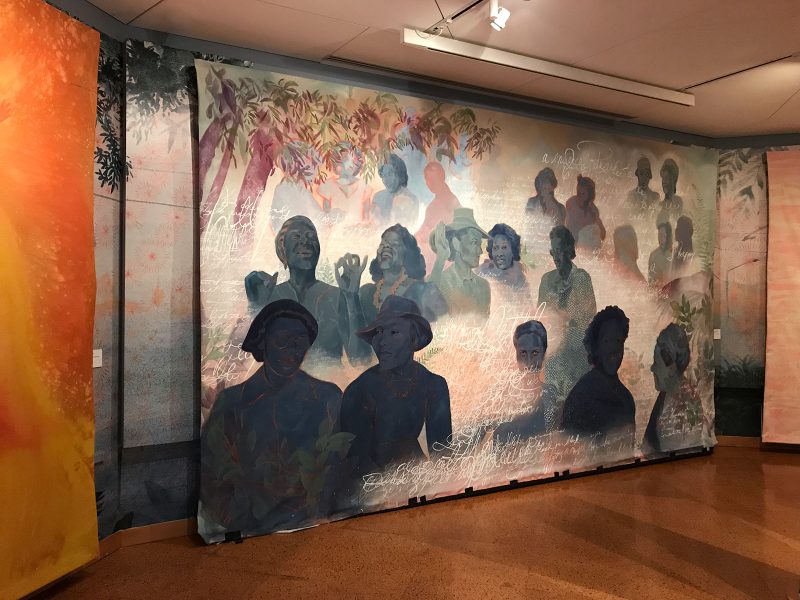
Finding her legacy
Báez’s paintings are atemporal in that they combine key Black female cultural figures from the past and present. We are offered a way to connect to these figures and their legacies through their writing, music, and teachings. But the magic that Báez creates is that she assembles her favorite key figures and presents them as a collective force, a treasure chest of sorts, as in the epic “To write fire until it is every breath” (2018), that features activist and educator Angela Davis five times at different scales and visual opacities. The scale of the work is important, and the transcriptions of letter excerpts meld with the portraits to reinforce the connections that Báez has uncovered and wishes to imply between these figures. This meeting of creative minds and culture-producers brings to mind the ethos of Judy Chicago’s famous “Dinner Party” sculptural installation with its combination of optimism and historical revision.
![A treasure chest of heroes in “Firelei Báez: Joy Out of Fire,” presented by The Studio Museum in Harlem 3 "To write fire until it is every breath," [detail], Acrylic on canvas, 2018; image courtesy of Katerina Lanfranco.](https://www.theartblog.org/wp-content/uploaded/2018/05/artblog-to-write-fire-until-its-every-breath-detail-800x601.jpg)
“Firelei Báez: Joy Out of Fire” is on view through November 24, 2018. Visit the Schomburg Center’s website for more information and to plan your visit.
Check out Flora Ward’s post from 2016 that talks about Firelei Baez’s work in the context of the show, “Unpacking Hispaniola” at Taller Puertorriqueño.
— Katerina Lanfranco is an artist living and working in New York City. She makes paintings and mixed media sculptures and installations exploring themes of nature, science, and fantasy. In addition to making art, Lanfranco curates, teaches and writes about art. Her most recent curatorial project, an exhibition called “Liminal Worlds” is currently on view at Trestle Gallery in Brooklyn, NY.



